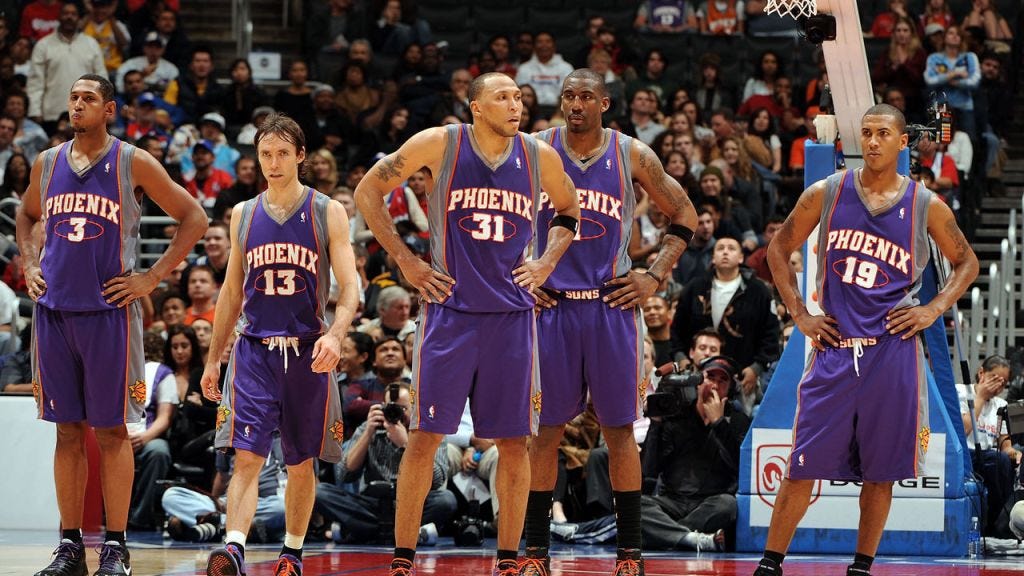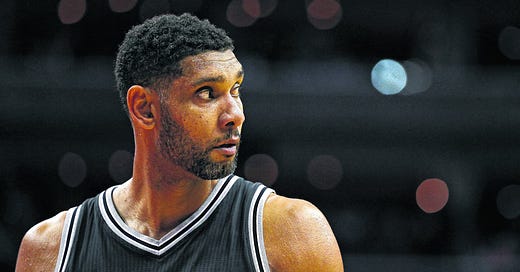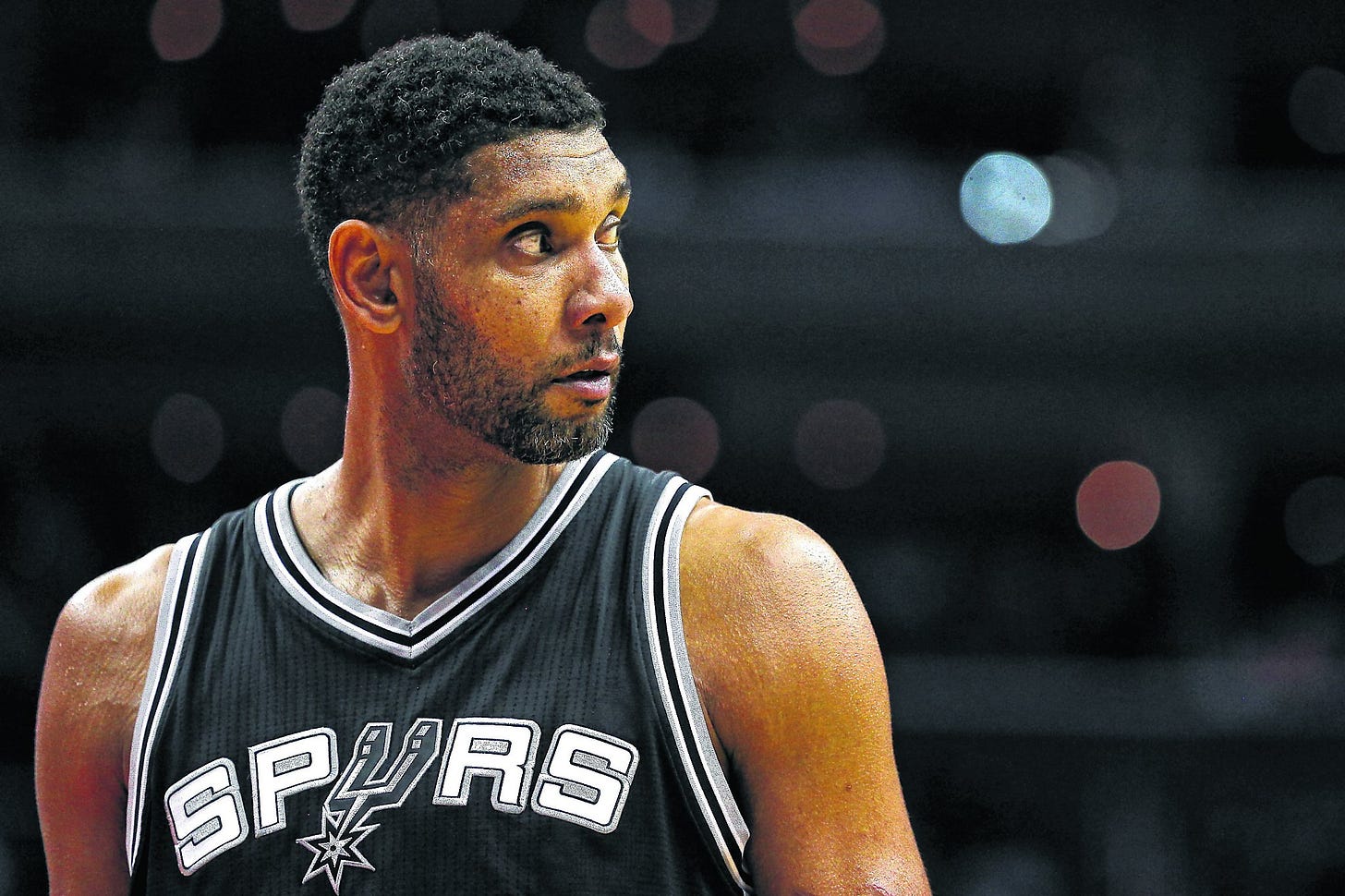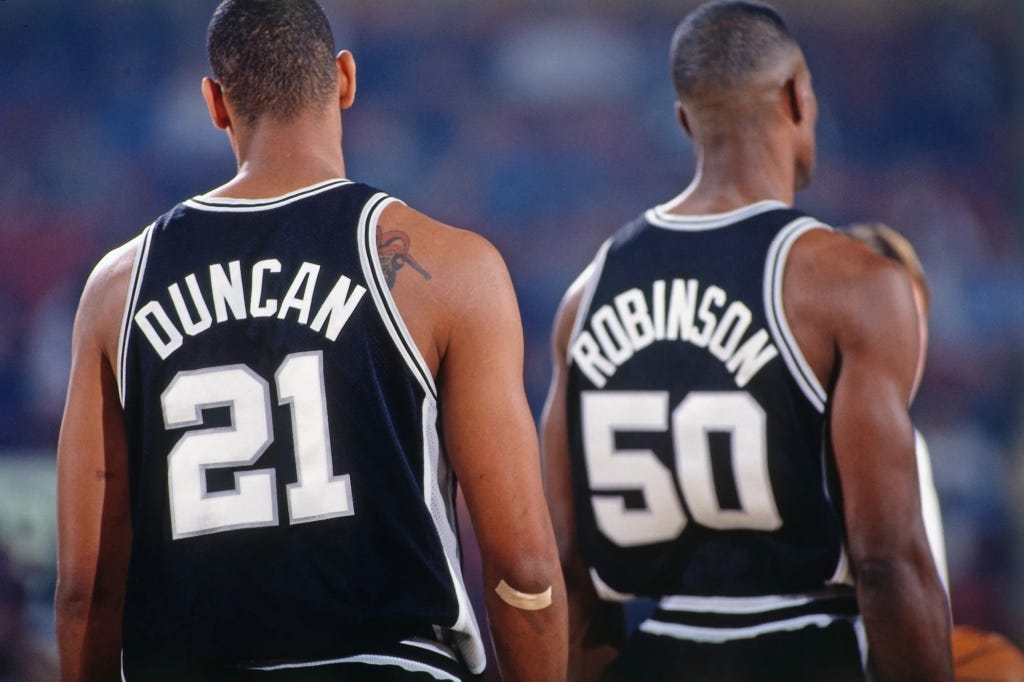The Death of Positional Basketball
As the NBA reaches further stages in its evolution, there's fewer clarity than ever before on what positions are.
This is part one of a two-part series on positions and archetypes in the NBA. Click here for part two.
By now you've undoubtedly heard that basketball has entered a "positionless" era, where the labels of "point guard," "shooting guard," "small forward," and so forth mean almost nothing. In a generation where the best player in the league is a 6'11 wing who runs the floor wheeling and dealing like a point guard, and where no one blinks seeing a 280-pound center dribble into midrange pull-ups like Kevin Durant, it's fair to say the game has changed quite a bit. The "traditional big man" is said to be an extinct species, with its last archaic remains either dying out or having adapted by incorporating perimeter shooting to their arsenals (the two best centers in the league being salient examples of this). Maybe the best and most concise way to describe the dramatic shift that's occurred in basketball is to say that whereas power forwards were interchangeable with centers, they're now the small forwards of old.
But this poses quite a quandary, especially for basketball fans who lived through the days when two Goliaths like Alonzo Mourning and Shaquille O'Neal, or Tim Duncan and David Robinson, could be deployed on the floor simultaneously. The problem for these devout, decades-old faithful of the sport, is that positions are now essentially meaningless. Versatility is at a premium; shooting and dribbling are, among most teams, expected from nearly everyone on the floor; big wings come into the league as skilled dribblers and centers are often expected to hold up when guarding shifty perimeter players.
To understand how we got here, we need to go back in time to the dead ball era, a time of obscenely low box score numbers (a Pacers-Pistons playoff game in 2004 once concluded with a 69-65 score), mind-numbingly slow pace of play, strictly defined positions and roles, and generally stronger emphasis on defense. But with the inception of certain offensively slanted rules and the gradual incorporation of analytics into the sport, a few teams were bold enough to innovate, tilting the balance in favour of offense in ways that were then seen as extreme but would ultimately revolutionize the game of basketball.
The Seven Seconds or Less Suns
One of the first and most outstanding teams in this regard was the Steve Nash and Mike D'Antoni-led "Seven Seconds or Less" Suns of the mid-2000s. Many defining characteristics of this team were radically unconventional: in the first place they slotted a traditional power forward, Amare Stoudemire, to play center and slid a 3, Shawn Marion, down to play the 4, adding another shooter to the lineup in the process. Second, they played an extremely fast style of play, wasting no time in running down the court in transition to take advantage of teams being in scramble mode and fire open shots as quickly as possible (hence the moniker "Seven Seconds or Less"). Third, their half court offense was perimeter based as opposed to interior based, featuring a far heavier dose of pick-and-roll in contrast to the contemporaneous post-centric offenses. And finally, they made it their aim to shoot as many threes as they could. The Suns valued spacing: the threat of outside shooters would make it easier for Nash and Stoudemire to run their unstoppable pick-and-roll attack; bring in help, and the quick-witted Nash would immediately dart a pass out to an open shooter.

The results followed accordingly. From 2005 to 2010, the Suns had the best offense in the league for five years out of six, finishing second only in 2007-08. Three of those Suns teams landed in the top 10 ever for relative offensive rating, and they were consistently in the top-5 for pace and 3-point attempts during that time. Defense was frequently cited as the reason they ultimately failed to win a championship, as critics liked to point out that the Suns went too far in prioritizing offense for the defensively slanted era they played in. While there may be some truth to this, untimely injuries and questionable officiating lay hold of much blame as well.
Eventually, the Suns gave in. They let the outside noise creep in, gave ear to the naysayers and began to doubt the cogency of their own philosophy. They traded Swiss army knife Shawn Marion for traditional center – as traditional as they get – Shaquille O'Neal in an attempt to conform to their surroundings. And that was it: they disbanded. D'Antoni left for New York in 2009 and Stoudemire followed him the year after. D'Antoni and Nash have since then spoken of their regret in not doubling down on their revolutionary system.
The 2009 Orlando Magic
In the late 2000s, the seeds planted by the Phoenix Suns yielded fruit. The Orlando Magic emerged as a 3-point shooting, pick-and-roll heavy squad with 4 snipers around defensive stud Dwight Howard. Hedo Turkoglu's skills as a ball handler and pull-up shooter coalesced with Howard's havoc-wreaking dives to the rim. Like the 2000s Suns, Orlando featured only one traditional big accompanied by a more dynamic wing to play the 4: Rashard Lewis, whose versatility at the power forward position (being an elite 3-point sniper with the ability to put the ball on the deck) made him one of the primary ancestors of the modern "stretch-4," and in his own time, he was quite the headache for slower-footed bigs who played the 4. In 2009, the Magic's shooting prowess led them past LeBron James's Cleveland Cavaliers in the Eastern Conference to clinch a finals berth against the Los Angeles Lakers.

Another thing worth mentioning about this team: the Magic were so revolutionary in playing more outside-in than inside-out even for themselves; Dwight Howard frequently voiced his displeasure with what he felt was a lack of post touches he received.
The Golden State Warriors' Motion Offense
In 2014-15, the Golden State Warriors pushed the boundaries of basketball positions as never before. Steve Kerr took the reins as the team's head coach and instituted a motion offense, making the team's mode of attack essentially a whirlwind of arbitrary chaos designed to harness the all-time great shooting ability of Stephen Curry and Klay Thompson. Defenses were sent into a frenzy trying to locate not one but two guards running around the half court looking for screens to fire off shots from the perimeter; just a single defensive blunder led to either an open Splash Brother three or a wide open layup for another Warrior on the floor.
The borders that clearly delineated traditional NBA positions crumbled. Golden State's point guard was a 6'3 shooter in perpetual off-ball motion and a huge share of the on-ball facilitating load fell on the shoulders of power forward Draymond Green. Of course there was still the fair share of Curry-Green pick-and-rolls, but the Warriors' system was unlike any of the older offenses, even that of Nash and the Suns. They built off of the European style "Beautiful Game" that won the San Antonio Spurs a championship the year prior, with heavy emphasis on movement of the ball and without the ball. But this was an offensive juggernaut the likes of which the NBA had never seen before, particularly because of just how deadly the shooting prowess of Curry and Thompson was.
Where We Are Now
Curry is often credited with "changing the game all by himself," and not without reason: he's inarguably the most dangerous outside shooter to ever play the game. But the NBA's 3-point revolution had already started long before Curry ever stepped foot on an NBA floor, and was headed towards this end regardless; Curry's arrival onto the scene, and the Warriors' system that maximized his shooting ability, merely accelerated the process to a whole new degree.
What Curry, Nash, the Warriors, the Suns, the analytics nerds, and all the other teams mentioned above did do was to irrevocably invert the game outside-in and put a premium on skill and versatility. In so doing, conventional basketball positions were abolished and a new era of roles was ushered in.






